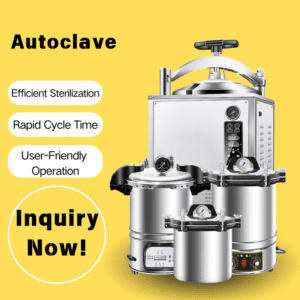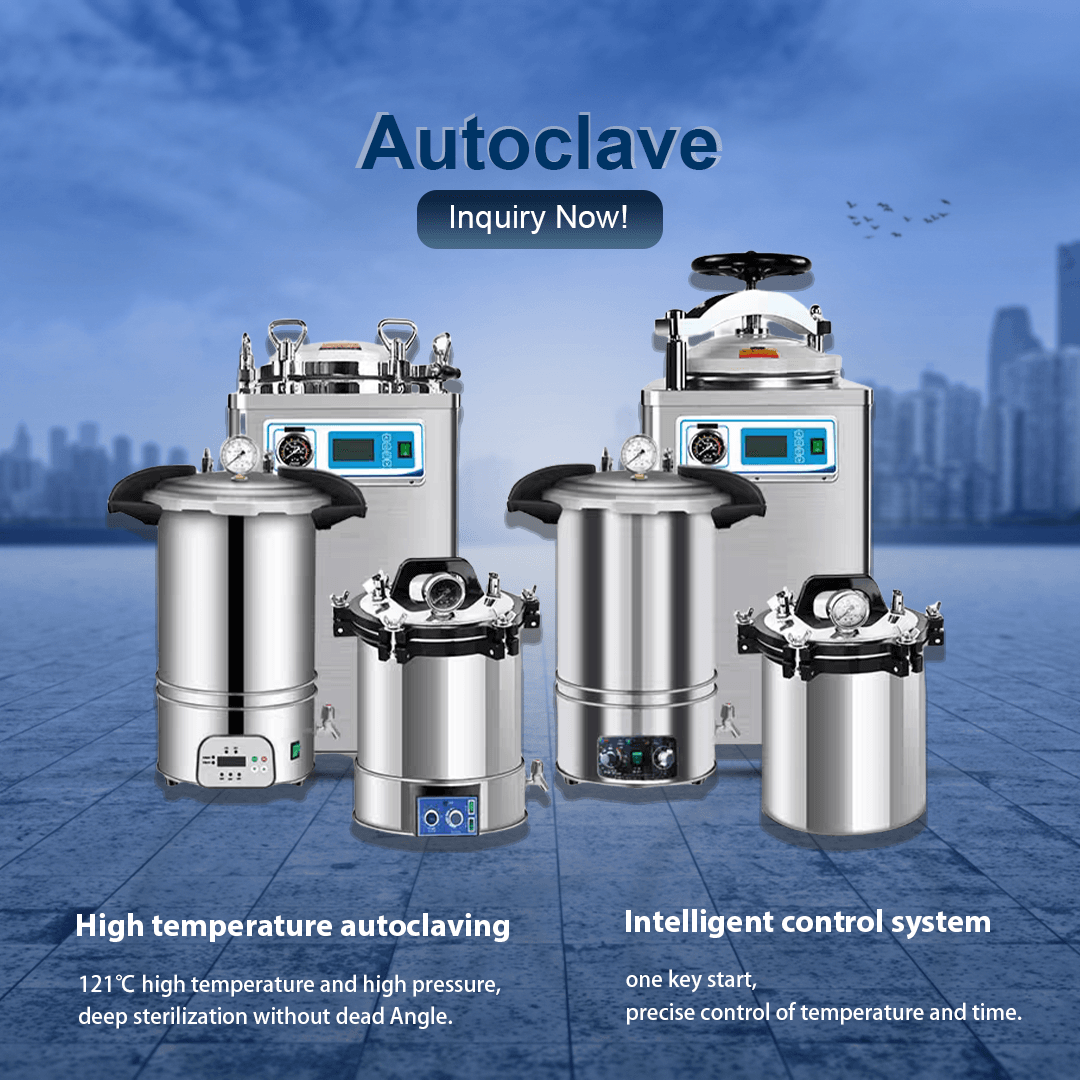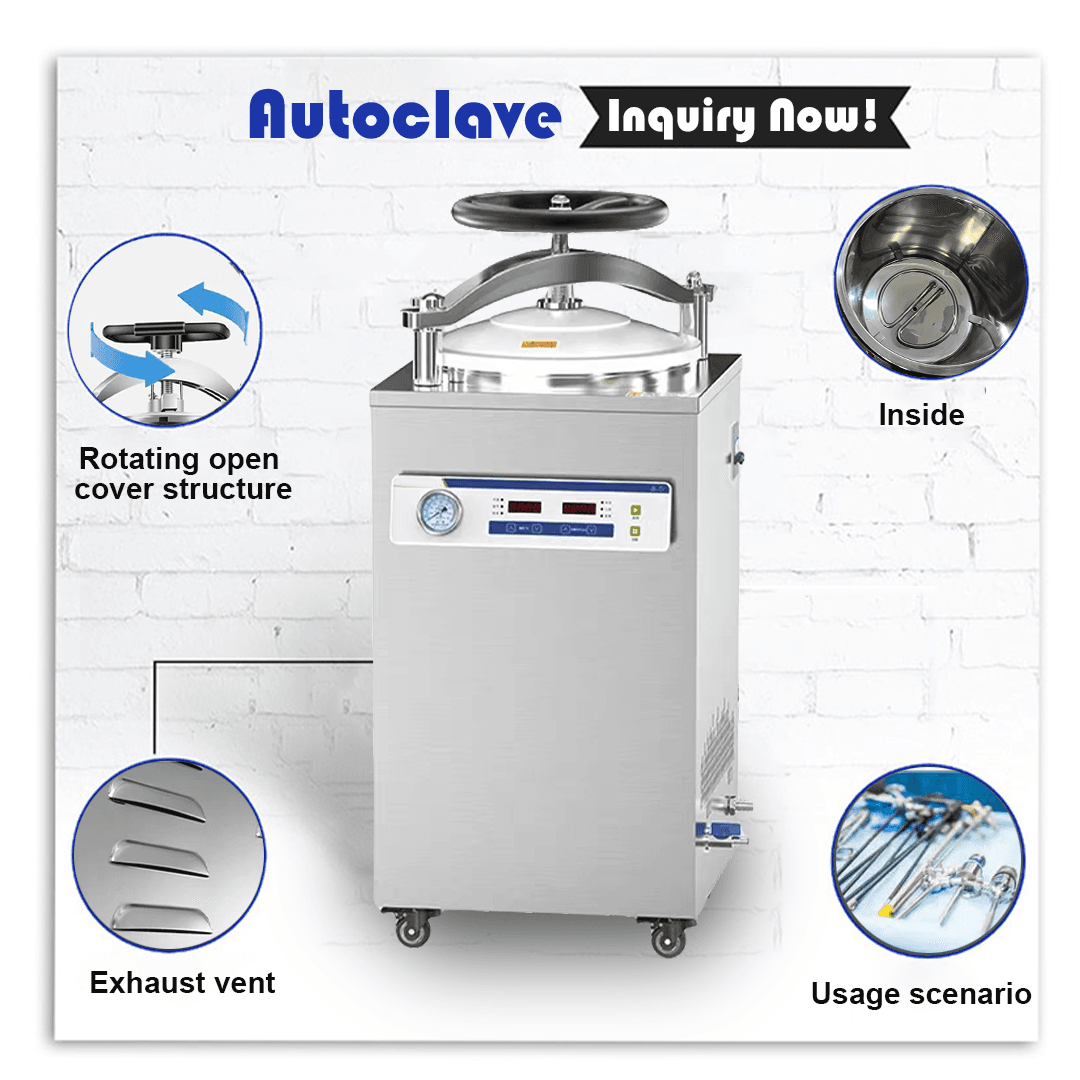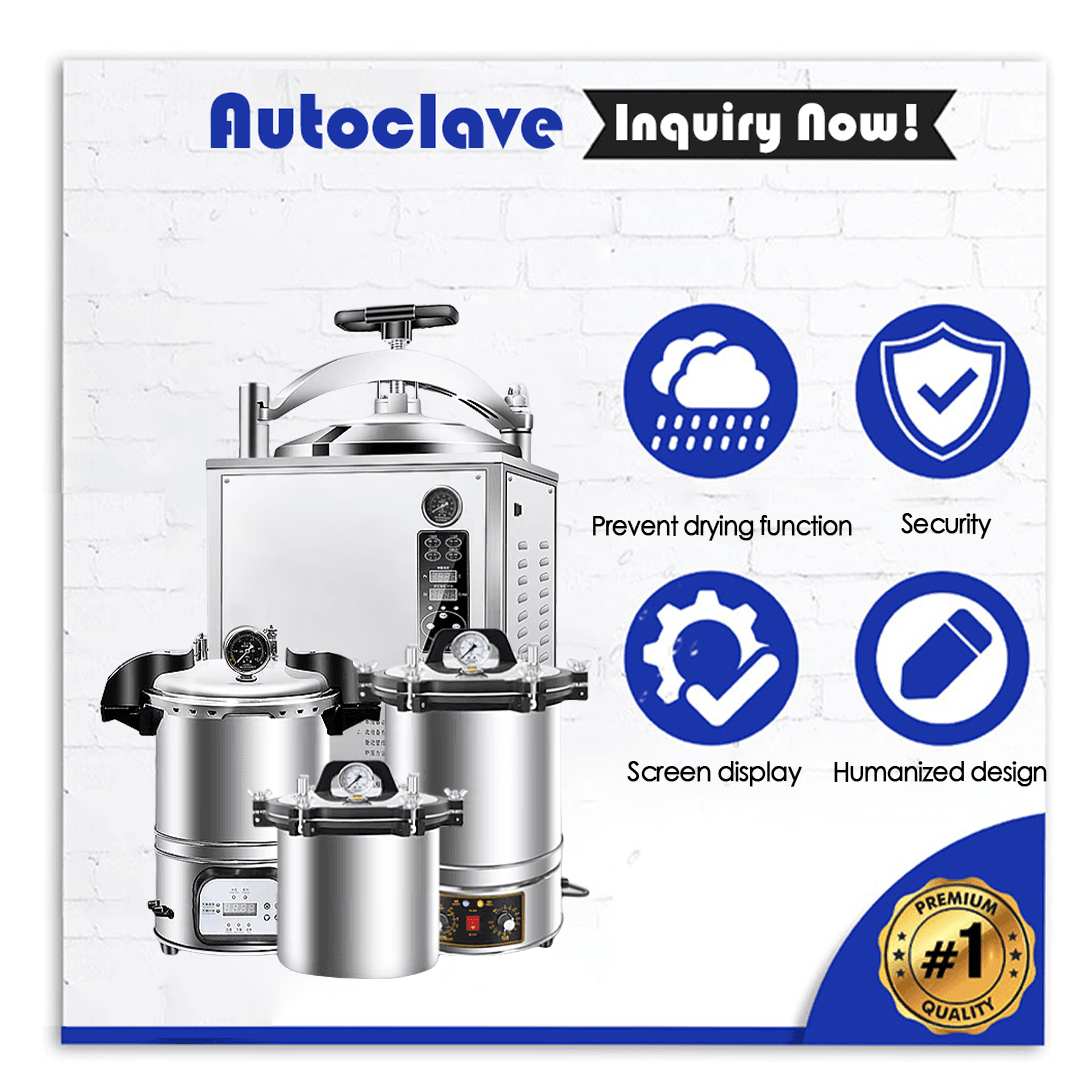
This section explains what an autoclave is and why its function is essential to medical and laboratory environments.
An autoclave functions as a specialized machine that sterilizes medical instruments and laboratory tools along with other materials by subjecting them to high-pressure steam at elevated temperatures. The procedure removes harmful microorganisms to maintain healthcare safety standards. Distributors and procurement professionals must understand autoclave costs because they affect pricing strategies as well as client budgets and market competitiveness. Such equipment requires more than just monetary investment because it signifies a dedication to high standards of quality and safety within medical facilities.
The final price of an autoclave depends on multiple factors that contribute to its cost. Knowledge of these factors allows distributors and dealers to predict client requirements and create customized solutions. This section provides an analysis of the key elements that determine the pricing of autoclaves.
Autoclaves are available in various sizes including compact tabletop units for small clinics and large industrial-grade units for high-volume hospitals. Smaller autoclaves start at just a few thousand dollars but larger models can reach prices into the tens of thousands. Sterilization capacity expressed as liters or instrument quantity per cycle affects the autoclave price. A sterilization unit that holds 20 liters usually costs less than a model that accommodates 100 liters. Distributors who serve diversified clients need to maintain multiple sizes in their inventory to meet the various financial capabilities and operational needs of their customers.
The specific autoclave model and its integrated technology directly affect its price point. Manual models require higher user involvement and therefore come at a lower cost compared to other types of equipment. Autoclaves featuring complete automation and advanced functionalities such as digital controls and vacuum sterilization systems command higher prices. Autoclaves that are created for specific applications like laboratory research or biohazardous waste management usually cost more because they feature specialized functionalities. Procurement specialists must evaluate client technology requirements when determining costs.
The materials used to construct an autoclave and its durability both contribute to its overall cost. Autoclave units constructed from high-quality stainless steel that endure frequent use and resist corrosion cost more than those built with less durable materials. Durable autoclaves require fewer repairs and replacements which impacts both the initial price and the equipment’s long-term value. Distributors can persuade clients seeking long-term savings by highlighting how well-constructed equipment offers extended lifespan and dependable performance despite higher initial prices.
The inclusion of supplementary features in modern autoclaves often results in higher purchase prices. Autoclaves may feature touchscreen interfaces along with data logging capabilities for cycle documentation and rapid cooling systems in addition to energy-efficient design options. The price increases when autoclaves offer customizable options like adjustable shelves or tailor-made cycle parameters for specific sterilization requirements. Advanced features raise the cost of autoclaves but improve both user experience and regulatory compliance which makes them desirable for healthcare facilities. These additional benefits provide distributors with a valuable selling point for clients who are ready to invest in advanced functionalities.
The total cost of an autoclave exceeds the base price because it includes both installation and maintenance expenses. The initial purchase price for larger autoclave units increases because they need professional installation and electrical/plumbing adjustments. The total ownership cost must include maintenance expenses which cover regular servicing together with replacement parts and calibration needs. Distributors enhance client value through bundled packages which encompass installation support and maintenance plans to help manage supplementary costs.
Healthcare autoclaves need to follow rigorous regulatory standards for safe and reliable performance. Equipment that meets international or regional standards typically requires additional expenses because of comprehensive testing and certification procedures. Procurement professionals must source autoclaves that meet regulatory standards despite higher costs because compliance is mandatory. Medical clients focus on purchasing compliant equipment to prevent potential legal and operational problems.
Autoclave prices differ by geographic location because shipping expenses, import tariffs, and market demand all impact final pricing. Medical equipment prices rise in areas with high market demand. Distributors sourcing equipment internationally face cost changes due to currency fluctuations and economic conditions. Dealers who understand market dynamics can refine their pricing approaches and forecast logistical expenses when providing cost estimates to clients.
Entry-level autoclaves represent a cost-effective option for healthcare facilities with budget constraints or smaller operational scales. These basic tabletop or portable autoclave models usually sell between $1,000 and $5,000. Entry-level autoclaves serve dental clinics and veterinary practices as well as small laboratories that require basic sterilization capabilities. These affordable models lack advanced features which means they need manual operation and take longer to complete cycles. Budget-focused distributors should market these economical autoclave models by emphasizing their dependable performance for essential sterilization tasks.
Autoclaves priced between $5,000 and $15,000 deliver enhanced capabilities while remaining affordable for many users. These autoclave models present semi-automated controls and expanded chamber capacities alongside quicker cycle times which positions them as practical solutions for medium-sized medical facilities. These devices might come equipped with safety mechanisms and digital displays to facilitate operation. Procurement specialists find this price range offers versatile options which attract healthcare providers who seek quality products without excessive costs.
Autoclaves in the high-end category with prices ranging from $15,000 to $50,000 or more serve large-scale operations within hospitals as well as research facilities and industrial environments. The advanced units feature modern automation capabilities together with large chambers and innovative attributes including quick cooling options, vacuum technology, and remote observation functions. The increased price mirrors their capacity to process extensive workloads while adhering to the strictest sterilization standards. Distributors can sell premium sterilization units to large healthcare institutions by emphasizing their benefits to operational efficiency and regulatory compliance.
Some autoclaves have designs that suit specialized functions including the sterilization of biohazardous waste and particular laboratory substances. The specialized units start at $20,000 but can reach costs of $100,000 or more based on customization and capacity options. The unique features of these autoclaves justify their high cost because they meet specific regulatory requirements and operational demands. Dealers who provide these customized solutions gain access to niche markets in the healthcare industry.
Operating an autoclave requires continuous expenses for electricity, water, and consumables like sterilization pouches or indicators beyond its initial purchase price. Energy-efficient models require more initial investment but generate savings through lower utility expenses over time. Distributors should inform clients about operational expenses so they can plan their budgets properly.
Staff training for autoclave operation includes possible expenses for workshops or on-site instruction. Certain distributors offer training within their purchase packages which provides additional value to clients. Technical support for ongoing repairs and troubleshooting increases ownership costs which procurement professionals must consider during their selection process.
Autoclave manufacturers offer warranties that protect against defects and malfunctions for an established time frame. Extended warranties and service contracts remain optional yet add to the total price while ensuring customers have protection against repair and maintenance expenses. Additional services from distributors boost client assurance in their purchase decision.
It is essential to evaluate a client’s sterilization needs and space limitations before setting the price for their autoclave. The equipment chosen will align with client needs while avoiding extra features that increase costs. Distributors can assist clients in navigating this process to establish trust and deliver satisfaction.
Autoclave purchases become more affordable for clients who worry about initial payments through available financing options and leasing plans. Facilities with limited budgets find autoclave purchase options more accessible through payment plans from distributors who work with financial institutions.
Help clients understand the advantages of long-term autoclave functionality beyond its initial purchasing cost. Models that last longer and run efficiently cost more upfront but produce savings by cutting maintenance and energy expenses. Decision-makers can receive higher investment justifications from procurement specialists through this perspective.
In the healthcare industry, knowing the price of autoclaves is fundamental for sourcing and supplying sterilization equipment. Autoclave prices fluctuate widely depending on variables like size and technology while basic models start from a few thousand dollars and specialized units exceed $100,000. Medical equipment distributors and procurement professionals can use this knowledge to make informed decisions and provide effective client advice while establishing strategic pricing. Taking into account installation costs along with maintenance and operational expenses provides a complete budget strategy for autoclaves beyond just their purchase price. You will become a trusted partner in the medical supply chain by monitoring cost trends while understanding client needs as demand for reliable sterilization solutions expands. Our team stands ready to help you examine autoclave possibilities and answer any pricing or specification inquiries you may have for your clients. Reach out via [inquiry@shkeling.com](mailto: For inquiries regarding autoclaves please contact us at inquiry@shkeling.com or through WhatsApp at +8618221822482 and you can visit our website at https://autoclaveequipment.com/. We are ready to help you choose sterilization solutions that fulfill your business objectives and support healthcare professionals.
1. What are the expected price ranges for a basic autoclave that small healthcare facilities need to purchase? Basic autoclaves designed for small facilities range from $1,000 to $5,000 based on their size and features making them appropriate for basic sterilization tasks.
2. The expense of purchasing an autoclave increases with larger sizes, higher capacities, advanced technology features, superior build quality, additional functionalities, necessary compliance certifications, and installation and maintenance needs. The cost of an autoclave depends on its size, capacity, technology used, build quality, additional features available, compliance certifications needed, and installation or maintenance requirements.
3. Do autoclave owners have to pay ongoing expenses to maintain their equipment? The ongoing costs for owning an autoclave are made up of electricity, water bills, consumables expenditures, staff training fees, and routine maintenance payments to maintain peak performance.
4. Distributors can provide financing solutions and create bundled packages that include training or maintenance services to help clients select cost-effective autoclaves that meet their needs. Through financing choices and bundled deals which include training and maintenance services distributors also help clients select cost-efficient autoclave models to fulfill their specific demands.
5. High-end autoclaves carry a higher price tag because they feature advanced automation capabilities and larger capacities along with specialized features that meet strict healthcare regulations. The high cost of premium autoclaves results from their advanced automation systems combined with larger capacity options and specialized features which meet strict regulatory standards for big hospitals.
6. Procurement professionals who understand autoclave costs gain the ability to make precise budget plans while advising clients better and choosing cost-effective equipment that meets quality standards and client satisfaction needs. Procurement professionals who understand costs can create precise budgets and guide clients effectively while choosing equipment that offers quality and affordability which improves client satisfaction.

Οι εγκαταστάσεις υγειονομικής περίθαλψης πρέπει να τηρούν αυστηρά πρότυπα υγιεινής και αποστείρωσης χωρίς εξαίρεση. Οι διανομείς ιατρικού εξοπλισμού και οι επαγγελματίες προμηθειών πρέπει να κατανοήσουν τα εργαλεία που διατηρούν τα πρότυπα για να προσφέρουν αξία στην υγειονομική περίθαλψη

Η διατήρηση αποστειρωμένων ιατρικών εργαλείων και εξοπλισμού αποτελεί τη σημαντικότερη πρακτική για την πρόληψη των λοιμώξεων και τη διασφάλιση της ασφάλειας των ασθενών σε χώρους υγειονομικής περίθαλψης. Οι διανομείς ιατρικού εξοπλισμού μαζί με τους αντιπροσώπους και τις προμήθειες

Ο ταχέως εξελισσόμενος τομέας της υγειονομικής περίθαλψης λειτουργεί βάσει αυστηρών κανονισμών που απαιτούν τη διατήρηση της στειρότητας ως πρωταρχικό μέλημα για την προστασία της ασφάλειας των ασθενών και τη διασφάλιση της συμμόρφωσης με τα λειτουργικά πρότυπα. Ιατρικός εξοπλισμός

Ο εξοπλισμός αποστείρωσης χρησιμεύει ως βασικό εργαλείο στις εγκαταστάσεις υγειονομικής περίθαλψης για τη διατήρηση των προτύπων καθαριότητας και την προστασία των ασθενών. Οι διανομείς ιατρικού εξοπλισμού μαζί με τους αντιπροσώπους και τους ειδικούς προμηθειών πρέπει να γνωρίζουν τα

Τα αυτόκλειστα χρησιμεύουν ως βασικά στοιχεία των διαδικασιών αποστείρωσης στις εγκαταστάσεις υγειονομικής περίθαλψης μέσω ατμού υψηλής πίεσης για την καταστροφή των παθογόνων μικροοργανισμών στα ιατρικά εργαλεία και άλλα υλικά. Οι διανομείς ιατρικού εξοπλισμού και οι ειδικοί προμηθειών πρέπει

Τα περιβάλλοντα υγειονομικής περίθαλψης πρέπει να δίνουν προτεραιότητα στην αποστείρωση, επειδή προστατεύει τους ασθενείς και το προσωπικό με την απομάκρυνση των μολυσματικών παθογόνων μικροοργανισμών από τις ιατρικές συσκευές και τα υλικά. Το αυτόκαυστο ξεχωρίζει ως ένα από τα καλύτερα εργαλεία